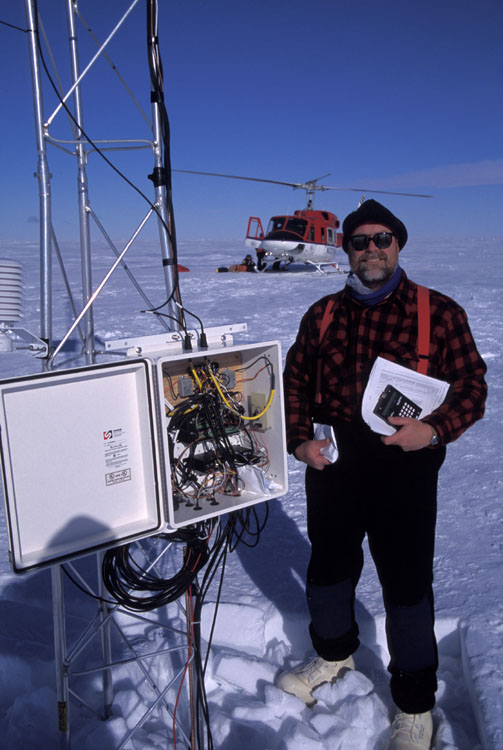
Here's Doug with the guts of the B15a station. The station records the following parameters: wind speed, wind direction, temperature at two heights, relative humidity, barometric pressure, incoming solar radiation, position from a GPS, and azimuth from a fluxgate compass. It sends the data back to us by satellite.
The goal of the project is to be able to understand and model how large icebergs move. There are three main factors that affect the motion. The first is the wind pushing directly on the iceberg. The second is ocean currents pushing directly on the iceberg (and of course the ocean currents are largely driven by the wind). The third factor is subtle tilts in the sea surface caused by the tides and by storms with high winds. The tilt is the strongest factor for icebergs of this size, moving the icebergs in a roughly 1 km long ellipse each day. However, the tides produce no net motion unless another object (like the ocean bottom, an island, or another iceberg) gets in the way. Hence, the winds and currents may be more important for total net motion.

